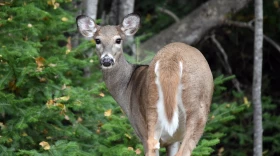Nearly 150 years later, the Sand Creek Massacre remains a wound that has not yet fully healed. This is evident in the recent closing of a permanent exhibit at the History Colorado Center in Denver exploring the 1864 massacre as part of its Colorado Stories section. The closing was prompted by concerns of Cheyenne and Arapaho tribal members over aspects of the exhibit’s interpretation and the lack of prior consultation, according to a complete story in the Denver Post. A reopening is pending the state and tribes reaching a consensus on the exhibit.The massacre, in which U.S. troops killed more than 160 Cheyenne and Arapaho, most of them women, children and the elderly, occurred along Sand Creek in far eastern Colorado only about 22 miles from the Kansas border.

The site is now designated as the Sand Creek National Historic Site with trails and interpretive signs. It’s located about 15 miles NNW of Eads, CO and is well worth the time and travel for anyone interested in understanding the complex history of the High Plains region. Click here for a pdf file with a map and directions.









